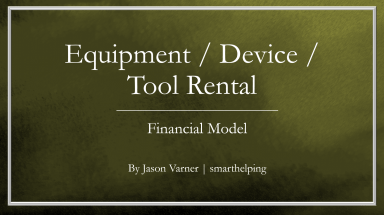
Last version published: 23/12/2023 08:45
Publication number: ELQ-50130-7
View all versions & Certificate

Tangible Good Rental Business: 5-Year Startup Financial Model / DCF Analysis
A financial model for planning out equipment / tool / device rental businesses with arbitrarily large / small inventories.
Further information
Build a monthly and annual pro forma and DCF Analysis.
Any sort of business that purchases tangible goods and then rents/leases them out over time.
This is not for real estate rental.
























